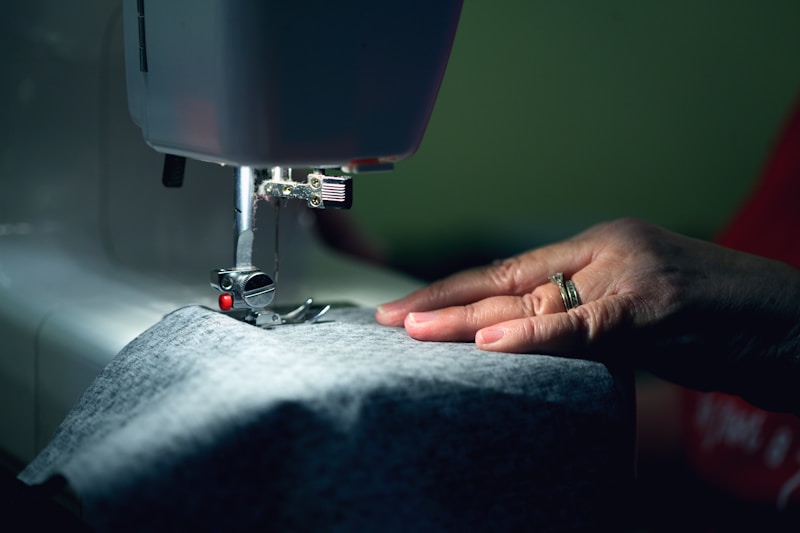Understanding Fabric Preservation Techniques: A Comprehensive Guide
Introduction to Fabric Preservation Techniques
Fabric preservation is a crucial aspect that allows individuals to maintain the quality and longevity of their textiles. In the world of art, fashion, and household items, understanding the appropriate techniques for fabric preservation can dramatically impact the appearance and durability of your favorite pieces. This article aims to delve deeply into various fabric preservation techniques, their importance, and the best practices to adopt for effective preservation.
The Importance of Fabric Preservation
Preserving fabrics is not merely a choice; it is a necessity. Over time, fabrics can deteriorate due to environmental factors, wear and tear, and improper storage. The following points highlight why fabric preservation is essential:
- Longevity: Proper preservation techniques can extend the life of textiles, making them available for future generations.
- Value Retention: For collectors and enthusiasts, maintaining the condition of fabrics preserves their monetary and sentimental value.
- Aesthetic Appeal: Well-preserved fabrics retain their original beauty, enhancing the overall appearance of any collection or household.
Common Fabric Preservation Techniques
Here, we will explore various fabric preservation techniques in detail, giving you insight into how to effectively preserve your fabrics.
1. Cleaning and Preparing Fabrics
Before you can effectively preserve a fabric, it's essential to clean it properly. The cleaning process varies based on the type of fabric:
- Delicate Fabrics: Hand wash delicate fabrics with mild detergents to avoid damage.
- Sturdy Fabrics: Machine wash heavier textiles; however, always follow the care label instructions.
After cleaning, allow fabrics to dry completely before packaging or storing them.
2. Proper Storage Methods
The manner in which you store your fabrics significantly impacts their longevity. Here are some recommended storage techniques:
- Avoid Folding: Wherever possible, hang fabrics instead of folding them to prevent creases and wear.
- Use Acid-Free Materials: When folding is necessary, use acid-free tissue paper to buffer the fabric and prevent breakage.

3. Climate Control
What many don't realize is that the environment plays a vital role in fabric preservation:
- Humidity Control: Aim to keep relative humidity between 30-50%. High humidity can lead to mold, while low humidity may cause fabrics to dry out and become brittle.
- Temperature Regulations: Store your fabrics in a cool, dark place to mitigate color fading and prevent deterioration.
4. Use of Protective Covers
When storing fabrics, using protective covers can further enhance preservation:
- Garment Bags: These are ideal for delicate items. Ensure they are breathable and made of non-toxic materials.
- Archival Boxes: For flat storage, use archival-quality boxes that provide protection from light and dust.
Preservation of Specific Fabric Types
Different fabrics require tailored preservation techniques. Below is a quick reference table outlining suitable preservation techniques for various fabric types:
| Fabric Type | Cleaning Method | Storage Recommendations |
| Silk | Hand wash with mild detergent | Store flat in acid-free tissue paper |
| Cotton | Machine wash in cold water | Hang or fold with buffering |
| Wool | Dry clean or hand wash gently | Store folded with moth repellent |
| Denim | Machine wash, turn inside out | Store upright or folded |
Preservation of Historical Fabrics
When it comes to preserving historical textiles, special care must be taken. Here are some essential steps to consider:
- Consult Professionals: Engaging with conservation specialists ensures that the right techniques are applied to irreplaceable pieces.
- Document Origins: Record where fabrics come from and any prior treatments they have undergone to maintain their history.
5. Avoiding Common Mistakes
While it is vital to adopt the right preservation techniques, avoiding common pitfalls is equally important:
- Avoid Plastic Covers: Storing fabrics in plastic can trap moisture, leading to mildew.
- Don't Overclean: Excessive cleaning can weaken fabrics; only clean when necessary.
Additional Tips for Effective Fabric Preservation
Beyond the techniques outlined above, incorporating these additional strategies can further enhance your fabric preservation:
- Regular Inspections: Periodically check your stored fabrics for any signs of damage or pests.
- Use Natural Pest Repellents: Consider using cedar blocks or lavender sachets to keep pests at bay without harming the fabric.
Conclusion: Embrace the Art of Fabric Preservation
In summary, understanding fabric preservation techniques is essential for anyone looking to maintain their textiles' quality and lifespan. By applying the proper cleaning, storage, climate control, and protection methods, you can ensure your fabrics remain vibrant and intact for years to come. Remember to avoid common mistakes to create a conducive environment for your fabrics. Whether you're a collector, an artist, or a homeowner, implementing these techniques will certainly pay off in the long run.
Final Note: Always take time to research specific preservation methods suited for your individual fabrics and circumstances. By doing so, you'll ensure that you treat each piece with the care it deserves, ultimately expanding your collection's life and beauty.